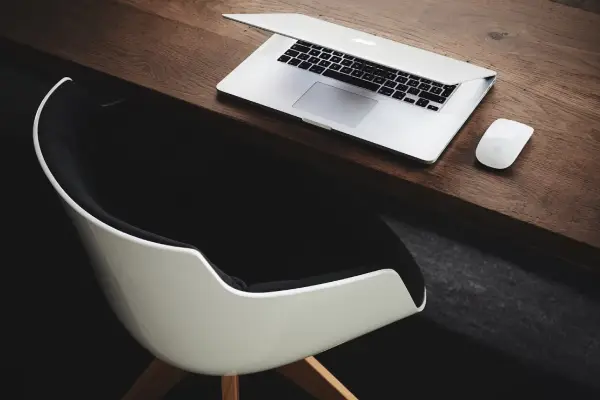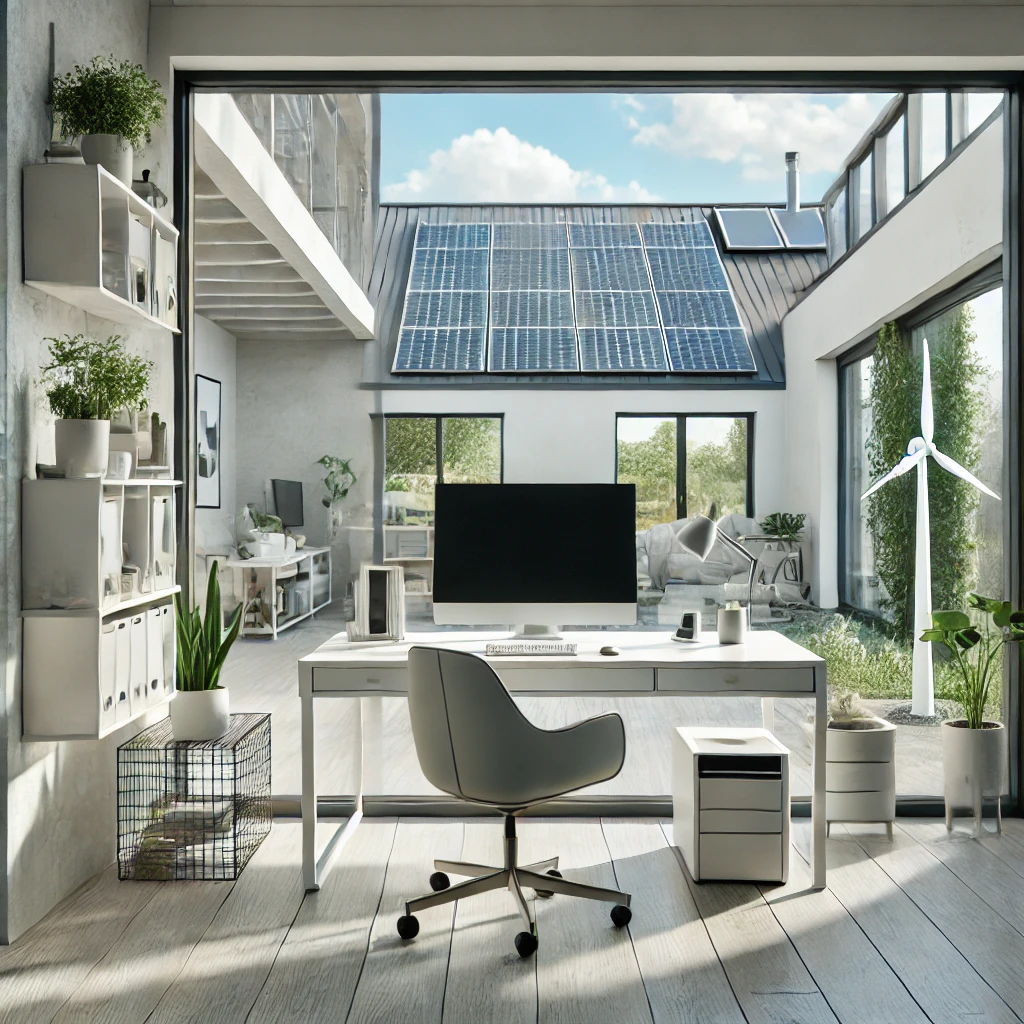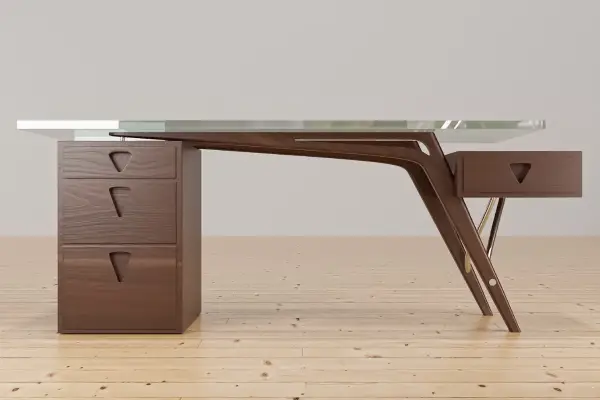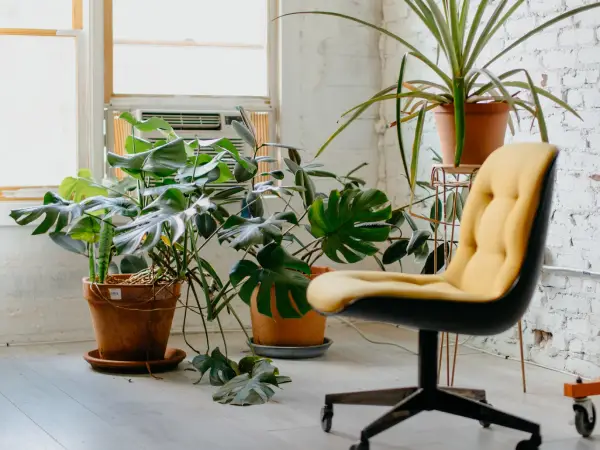In today’s fast-paced and often chaotic work environment, the concept of minimalist office furniture has gained significant traction. Minimalism, with its emphasis on simplicity, functionality, and clean aesthetics, is more than just a design trend—it’s a lifestyle choice that can transform the way we work. By eliminating unnecessary clutter and focusing on essential, high-quality pieces, minimalist office furniture creates a serene and efficient workspace that enhances productivity and well-being.
A well-designed office plays a crucial role in our productivity. The furniture we choose directly impacts our comfort, focus, and overall efficiency. Cluttered and disorganized spaces can lead to stress and distraction, while a clean, minimalist environment fosters clarity and concentration. Whether you’re working from home or in a corporate setting, selecting the right office furniture is key to creating a productive workspace.
In this article, we’ll delve into the principles of minimalist design and explore how choosing minimalist office furniture can maximize your productivity. From desks and chairs to storage solutions and lighting, we’ll cover the essential pieces that can transform your office into a sleek and efficient haven. Join us as we discover the benefits of minimalist office furniture and provide practical tips for selecting and maintaining a minimalist workspace. Embrace simplicity, and unlock the potential of your office for maximum productivity.
The Principles of Minimalist Office Design
Minimalist office design is grounded in the idea that simplicity and functionality can enhance productivity and well-being. By removing unnecessary distractions and focusing on what truly matters, minimalist design creates an environment where you can work more efficiently and comfortably. Here are the key principles of minimalist office design and how they contribute to a productive workspace:
Simplicity
Less is More: The core principle of minimalist design is simplicity. This means choosing fewer items but ensuring each piece serves a purpose. In an office setting, this translates to selecting furniture and accessories that are essential and functional, avoiding clutter and excessive decoration.
Streamlined Design: Minimalist office furniture often features clean lines and simple shapes. This streamlined design not only looks elegant but also contributes to a sense of order and calm, which can improve focus and productivity.
Functionality
Purpose-Driven Pieces: Every item in a minimalist office should have a clear function. Desks, chairs, and storage solutions are chosen for their utility and ability to support your work. Multifunctional furniture, such as desks with built-in storage or chairs that offer ergonomic support, exemplify this principle.
Efficient Use of Space: Minimalist design maximizes the use of available space. By choosing furniture that fits well within the room and serves multiple purposes, you can create a more open and efficient workspace. This also includes using vertical space with shelves or wall-mounted storage to keep the floor area clear.
Clean Lines and Open Spaces
Visual Clarity: Clean lines and open spaces are hallmarks of minimalist design. Furniture with sleek, unadorned surfaces helps create a visually uncluttered environment. This visual clarity reduces distractions and allows you to concentrate better on your tasks.
Airy and Light: A minimalist office often feels airy and light due to its open spaces and lack of heavy, bulky furniture. This can create a more pleasant and inviting atmosphere, making it easier to stay motivated and focused throughout the day.
Neutral Color Palettes
Calming Effect: Minimalist design typically employs neutral color palettes, such as whites, grays, blacks, and natural wood tones. These colors have a calming effect, which can reduce stress and create a more serene work environment.
Versatility: Neutral colors are versatile and can easily be paired with different decor styles. This makes it easier to update or change your office decor without having to replace all your furniture.
Benefits of Minimalist Design in an Office Setting
Enhanced Focus: A clutter-free environment minimizes distractions, allowing you to concentrate better on your work. The simplicity of minimalist design promotes a clear and focused mindset.
Increased Productivity: With fewer distractions and a more organized workspace, you’ll likely find that your productivity increases. Everything you need is within reach, and there’s no time wasted searching for misplaced items.
Stress Reduction: Clutter can contribute to feelings of stress and anxiety. A minimalist office, with its clean and orderly appearance, can create a calming atmosphere that reduces stress and promotes mental well-being.
Timeless Aesthetic: Minimalist design is timeless and versatile. It can seamlessly blend with various decor styles and can easily be updated with a few key changes, ensuring that your home office remains stylish and relevant over time.
By understanding and applying these principles of minimalist design, you can create an office that not only looks great but also enhances your productivity and overall well-being. In the next sections, we’ll explore the key features of minimalist office furniture and provide practical tips for choosing and maintaining a minimalist workspace.
Key Features of Minimalist Office Furniture
Minimalist office furniture is designed to promote productivity, comfort, and aesthetic harmony. By focusing on simplicity and functionality, these pieces create an environment that supports efficient work habits and reduces stress. Here are the key features that define minimalist office furniture and how they contribute to a productive workspace:
Neutral Color Palettes
Calming and Versatile: Minimalist office furniture typically features neutral color palettes, including whites, blacks, grays, and natural wood tones. These colors create a calming atmosphere, which can help reduce stress and improve focus. Additionally, neutral colors are versatile and can easily complement various decor styles, allowing for flexibility in design.
Consistency in Design: A consistent color palette throughout your office creates a cohesive and harmonious look. This visual unity helps maintain a clean and uncluttered environment, which is essential for a minimalist workspace.
Use of Natural and High-Quality Materials
Warmth and Texture: Natural materials like wood, metal, and glass are commonly used in minimalist office furniture. These materials add warmth and texture to the space while maintaining a sleek and simple aesthetic. For example, a wooden desk with a polished finish or a metal chair with a streamlined design can enhance the overall look and feel of your office.
Durability and Sustainability: Investing in high-quality materials ensures that your furniture is durable and long-lasting. Additionally, choosing sustainable materials, such as responsibly sourced wood or recycled metal, aligns with the minimalist principle of mindful consumption and environmental responsibility.
Clean and Uncluttered Surfaces
Efficient Work Environment: Minimalist office furniture often features clean, uncluttered surfaces. Desks, shelves, and tables are designed to provide ample workspace without unnecessary embellishments. This simplicity helps create an efficient work environment where you can focus on your tasks without distraction.
Hidden Storage: Many minimalist furniture designs incorporate hidden storage solutions to keep your workspace organized. Built-in drawers, compartments, and shelves allow you to store essential items out of sight, maintaining a tidy and uncluttered appearance.
Ergonomic Considerations
Comfort and Health: Ergonomics is a key consideration in minimalist office furniture design. Ergonomic chairs, adjustable desks, and other furniture pieces are designed to support good posture and reduce the risk of strain or injury. This focus on comfort and health ensures that you can work for extended periods without discomfort.
Adjustability: Many minimalist desks and chairs offer adjustable features, allowing you to customize your workspace to suit your needs. For example, a height-adjustable desk enables you to switch between sitting and standing positions, promoting movement and reducing the health risks associated with prolonged sitting.
Multi-Functional Pieces
Versatility: Minimalist furniture often serves multiple purposes, maximizing functionality while minimizing the number of items needed in your office. For instance, a desk with built-in shelves can provide both a work surface and storage space, reducing the need for additional furniture.
Space Efficiency: Multi-functional furniture is especially beneficial for small home offices or shared workspaces. By choosing pieces that serve multiple roles, you can optimize the use of your available space and maintain a clean, open environment.
By incorporating these key features into your office, minimalist furniture helps create a workspace that is both aesthetically pleasing and highly functional. In the next section, we will explore essential minimalist office furniture pieces, including desks, chairs, storage solutions, and lighting, and how they contribute to a productive and efficient home office.
Essential Minimalist Office Furniture Pieces
Creating a minimalist office requires selecting furniture that combines simplicity, functionality, and aesthetic appeal. Here are some essential minimalist office furniture pieces that can transform your workspace into a sleek and productive environment:
Minimalist Desks
Characteristics and Benefits: Minimalist desks are designed with clean lines, uncluttered surfaces, and a focus on functionality. They often feature neutral colors and high-quality materials like wood, metal, or glass. The simplicity of these desks reduces visual clutter and provides a calm, organized workspace that enhances focus and productivity.
Popular Examples:
Scandinavian-Inspired Desks: These desks typically feature light wood tones and white finishes, creating a bright and airy atmosphere. They often include built-in storage solutions, such as drawers or shelves, to keep your workspace tidy.
Modern Industrial Desks: Combining metal and wood, these desks offer a rugged yet sophisticated look. They emphasize durability and simplicity, with open frameworks that maintain a spacious feel.
Wall-Mounted Desks: Ideal for small spaces, wall-mounted desks save floor space and create a minimalist aesthetic. They can be folded away when not in use, maintaining an uncluttered environment.
Ergonomic Chairs
Importance of Ergonomic Seating for Productivity: An ergonomic chair is essential for maintaining good posture and preventing strain during long hours of work. Minimalist ergonomic chairs are designed to provide maximum comfort and support while maintaining a sleek, simple look.
Features of Minimalist Ergonomic Chairs:
Adjustability: Look for chairs with adjustable height, armrests, and lumbar support to customize your seating position for optimal comfort.
Clean Design: Minimalist chairs often feature clean lines and neutral colors, complementing the overall aesthetic of your office.
High-Quality Materials: Choose chairs made from durable and breathable materials, such as mesh or high-quality fabric, to ensure longevity and comfort.
Storage Solutions
Role of Storage in Maintaining a Minimalist Office: Effective storage solutions are crucial for keeping your workspace organized and clutter-free. Minimalist storage options provide ample space for your essentials while maintaining a clean and streamlined appearance.
Examples of Minimalist Storage Options:
Filing Cabinets: Sleek and simple filing cabinets offer efficient storage for documents and office supplies. Opt for models with clean lines and neutral colors to blend seamlessly with your office decor.
Shelves: Wall-mounted shelves save floor space and provide an open, airy look. They can be used to store books, files, and decorative items while keeping your desk surface clear.
Desk Organizers: Minimalist desk organizers, such as trays, boxes, and drawer dividers, help keep small items and supplies neatly arranged and out of sight.
Lighting Solutions
Importance of Good Lighting in a Minimalist Office: Proper lighting is essential for creating a productive and comfortable workspace. Minimalist lighting solutions provide adequate illumination while maintaining a clean and simple aesthetic.
Minimalist Lighting Options:
Desk Lamps: Choose desk lamps with sleek, modern designs and adjustable features to provide focused lighting for your work area. LED lamps are a great option for their energy efficiency and long lifespan.
Overhead Lighting: Minimalist overhead lighting fixtures, such as pendant lights or track lighting, offer ample illumination without overwhelming the space. Opt for designs that complement the overall aesthetic of your office.
Natural Light: Whenever possible, position your desk near a window to take advantage of natural light. Natural light not only enhances the look of your office but also improves mood and productivity.
By incorporating these essential minimalist office furniture pieces, you can create a workspace that is both functional and aesthetically pleasing. In the next section, we will discuss how to choose the right minimalist furniture for your specific needs and space, ensuring that your home office supports maximum productivity and well-being.
Choosing the Right Minimalist Furniture for Your Office
Selecting the perfect minimalist furniture for your office is about more than just aesthetics—it’s about creating a space that fosters productivity, comfort, and well-being. Here’s how to choose the right minimalist furniture that meets your needs and enhances your workspace:
Assessing Your Office Space and Needs
Room Size: Start by measuring your office space. Understanding the dimensions will help you choose furniture that fits comfortably without overcrowding. In a smaller room, opt for compact, multi-functional pieces that maximize space. For larger spaces, consider how you can create designated areas for different tasks, such as a separate desk for computer work and a table for meetings or brainstorming.
Functional Requirements: Think about your daily tasks and what you need to support them. Do you require ample storage for documents and supplies, or is a clean, open workspace more important? Make a list of your essential items and functions to guide your furniture choices. For example, if you frequently use multiple monitors, an L-shaped desk might be ideal, whereas a simple writing desk could suffice for occasional laptop use.
Matching Furniture with Your Office Decor
Consistency in Style: Ensure your furniture aligns with the existing decor of your office. Minimalist design thrives on harmony and simplicity, so aim for a consistent style throughout. If your office has a modern vibe, opt for furniture with sleek lines and metallic finishes. For a more natural look, choose pieces made of light woods and neutral fabrics.
Color Palette: Stick to a neutral color palette to maintain a calm and cohesive environment. Whites, grays, blacks, and natural wood tones are versatile and timeless. You can add pops of color through accessories or plants, but keep the main furniture pieces neutral to avoid visual clutter.
Budget Considerations
Set a Budget: Determine your budget before you start shopping. Minimalist furniture can range from affordable to high-end, so having a clear budget will help you narrow down your options. Remember, investing in a few high-quality pieces is often better than filling your space with cheaper, less durable items.
Quality vs. Cost: While it’s tempting to go for the lowest price, consider the quality and durability of the furniture. High-quality pieces made from sturdy materials may have a higher upfront cost but will save you money in the long run by lasting longer and requiring less frequent replacement.
Quality and Durability
Material Choices: Opt for furniture made from durable materials like solid wood, metal, and tempered glass. These materials not only look sleek and modern but also stand up to daily wear and tear. Avoid cheap composites or plastics that can degrade over time.
Craftsmanship: Pay attention to the craftsmanship of the furniture. Well-constructed pieces with solid joints and smooth finishes are indicators of quality. Read reviews or choose reputable brands known for their durability and design excellence.
Additional Features to Consider
Ergonomics: Prioritize ergonomic furniture to ensure comfort during long work hours. Look for chairs with adjustable height and lumbar support, and desks that can be customized to your preferred working height. Ergonomic features can significantly enhance your productivity and reduce the risk of strain or injury.
Multi-Functional Pieces: Consider furniture that serves multiple purposes. For example, a desk with built-in storage can keep your workspace tidy, while a fold-out table can be used for meetings or additional work surfaces as needed. Multi-functional furniture is especially beneficial in smaller spaces where maximizing every inch is crucial.
Sustainability: If environmental impact is a concern, look for furniture made from sustainable materials or produced by eco-friendly brands. Many companies now offer minimalist furniture options that are both stylish and environmentally responsible.
By carefully considering these factors, you can choose minimalist office furniture that not only enhances the look of your workspace but also supports your functional needs and well-being. The right furniture will help you create a minimalist office that is efficient, comfortable, and conducive to productivity. In the next section, we’ll provide tips for maintaining your minimalist workspace to ensure it remains a haven of order and efficiency.
Tips for Maintaining a Minimalist Office
Congratulations on setting up your minimalist office! Now, the challenge is to maintain that clean, clutter-free space that fosters productivity and serenity. Here are some practical tips to help you keep your minimalist office in top shape:
Regular Decluttering Routines
Daily Tidy-Up: Spend a few minutes at the end of each workday to clear your desk. Put away items that are not needed for the next day, file important documents, and discard any unnecessary papers. This daily habit will prevent clutter from accumulating and keep your workspace looking fresh.
Weekly Clean-Up: Dedicate some time each week to a more thorough decluttering session. Go through your drawers, shelves, and any other storage spaces to ensure everything is organized. Remove or relocate items that don’t belong in your office. This weekly routine helps maintain order and prevents your office from becoming a dumping ground for miscellaneous items.
Organizing Your Workspace Effectively
Use Storage Solutions: Utilize the storage options in your minimalist furniture. Built-in drawers, shelves, and compartments are perfect for keeping your desk surface clear. Assign specific places for frequently used items so that everything has a home. This organization system makes it easier to find what you need quickly and keeps your workspace tidy.
Digital Organization: Minimize physical paperwork by going digital. Store documents and notes on your computer or cloud storage. Use digital task managers and calendars to keep track of your schedule and to-do lists. By reducing the amount of paper clutter, you maintain a cleaner workspace and streamline your workflow.
Cable Management: Messy cables can quickly ruin the sleek look of a minimalist office. Use cable organizers, clips, or sleeves to keep your cords under control. Consider wireless devices to further reduce the number of cables in your workspace. A tidy cable arrangement not only looks better but also prevents distractions and potential hazards.
Incorporating Technology for a Paperless Office
Scan and Shred: Transition to a paperless office by scanning important documents and storing them digitally. Shred unnecessary papers to prevent them from piling up. Digital files are easier to organize, search, and back up, making your workflow more efficient.
Cloud Storage: Utilize cloud storage solutions like Google Drive, Dropbox, or OneDrive to store and access your files from anywhere. Cloud storage keeps your documents secure, reduces physical clutter, and allows for easy collaboration with colleagues.
Benefits of Maintaining a Minimalist Office for Productivity
Enhanced Focus: A clutter-free environment minimizes distractions, allowing you to focus better on your tasks. With fewer items vying for your attention, you can concentrate more effectively and work more efficiently.
Improved Efficiency: An organized workspace means you spend less time searching for items and more time being productive. Knowing exactly where everything is saves time and reduces frustration, leading to a smoother workflow.
Stress Reduction: Clutter can contribute to feelings of stress and overwhelm. Maintaining a minimalist office creates a calming atmosphere that promotes mental well-being. A tidy workspace can help reduce anxiety and create a more pleasant work environment.
Personal Accountability
Commit to Minimalism: Embrace minimalism as a lifestyle choice. Regularly assess your workspace and make adjustments as needed to uphold minimalist principles. Stay mindful of what you bring into your office and prioritize quality over quantity.
Set Goals: Set specific goals for maintaining your minimalist office. For example, commit to decluttering for 10 minutes each day or aim to reduce paper usage by a certain percentage. Setting achievable goals helps you stay accountable and motivated.
By implementing these tips, you can enjoy the benefits of a minimalist office on a daily basis. A well-maintained minimalist workspace not only enhances productivity but also creates a peaceful and inspiring environment where you can thrive professionally and personally. Keep your office clutter-free, and let simplicity guide your path to success.
Case Studies and Examples
To truly appreciate the impact of minimalist office furniture on productivity and well-being, let’s explore some real-life case studies and examples. These stories highlight how individuals and businesses have transformed their workspaces using minimalist principles, leading to remarkable improvements in efficiency and satisfaction.
Case Study 1: The Home Office Transformation
Background: Sarah, a freelance graphic designer, struggled with a cluttered and disorganized home office. Her desk was constantly covered in papers, art supplies, and miscellaneous items, making it difficult to focus and find what she needed. Frustrated with her workspace, she decided to adopt a minimalist approach.
Solution: Sarah started by decluttering her office, removing everything that wasn’t essential to her work. She invested in a sleek, white minimalist desk with built-in storage and a comfortable ergonomic chair. To keep her workspace tidy, she used minimalist desk organizers and wall-mounted shelves for her supplies. Sarah also incorporated a few plants to add a touch of nature without overwhelming the space.
Outcome: The transformation was profound. Sarah found that her new minimalist office not only looked better but also made her feel more focused and creative. With a clutter-free desk and efficient storage solutions, she was able to work more efficiently and enjoy her time in the office. Her productivity increased, and she experienced less stress and frustration.
Case Study 2: The Corporate Office Makeover
Background: A mid-sized marketing agency decided to revamp its office space to foster a more productive and collaborative environment. The old office was filled with bulky furniture, cluttered workstations, and outdated decor, leading to a lack of motivation among employees.
Solution: The agency hired an interior designer specializing in minimalist design. They replaced the old furniture with modern, minimalist desks and ergonomic chairs. The new layout included open workspaces with clean lines and ample natural light. Storage solutions like filing cabinets and wall-mounted shelves were used to keep the office organized. The design also incorporated breakout areas with minimalist lounge furniture for informal meetings and relaxation.
Outcome: The office makeover had a significant impact on the team’s morale and productivity. Employees appreciated the clean, uncluttered workstations, which helped them stay focused and organized. The open layout and minimalist decor created a more inviting and inspiring atmosphere, encouraging collaboration and creativity. Overall, the agency saw an improvement in both the quality of work and employee satisfaction.
Example 1: The Digital Nomad’s Workspace
Background: Alex, a digital nomad and remote worker, needed a portable and efficient workspace solution. Constantly on the move, he required a minimalist setup that was easy to pack and set up anywhere.
Solution: Alex opted for a lightweight, foldable desk and a compact ergonomic chair that could be easily transported. He used a laptop stand to maintain good posture and invested in a portable desk organizer for his essentials. By choosing multi-functional and space-saving items, Alex was able to create a minimalist workspace that fit his nomadic lifestyle.
Outcome: The minimalist setup allowed Alex to work comfortably and efficiently, regardless of his location. The simplicity and portability of his office essentials made it easy to maintain an organized and productive workspace on the go. This flexibility enhanced his ability to stay focused and meet deadlines, no matter where he was.
Example 2: The Small Business Owner’s Office
Background: Emma, the owner of a small boutique, wanted to create a minimalist office within her store to manage administrative tasks and inventory. The challenge was to maximize the limited space available while maintaining a clean and professional look.
Solution: Emma chose a small, minimalist desk with hidden storage compartments to keep her workspace clutter-free. She installed floating shelves on the wall for additional storage without taking up floor space. To maintain the aesthetic, she used neutral colors and simple, elegant decor. Emma also invested in a comfortable ergonomic chair to ensure she could work efficiently for extended periods.
Outcome: The minimalist office design fit perfectly within the boutique’s aesthetic and provided Emma with a functional and organized workspace. The efficient use of space and storage solutions helped her stay on top of administrative tasks and inventory management without feeling overwhelmed by clutter. The professional look of her office also made a positive impression on clients and suppliers who visited the store.
These case studies and examples demonstrate the transformative power of minimalist office furniture. By embracing simplicity, functionality, and clean design, you can create a workspace that enhances productivity, reduces stress, and fosters a sense of well-being. Whether you’re a freelancer, a business owner, or part of a corporate team, minimalist principles can help you achieve a more efficient and inspiring work environment.
Conclusion: Embracing Minimalism for Maximum Productivity
In our fast-paced and often chaotic work environments, adopting a minimalist approach to office furniture can be a game-changer. By prioritizing simplicity, functionality, and clean design, you can create a workspace that not only looks aesthetically pleasing but also significantly boosts your productivity and well-being.
Minimalist office furniture, with its neutral color palettes, high-quality materials, and ergonomic designs, helps create an organized and distraction-free environment. When your workspace is free of clutter, it’s easier to focus on your tasks, think clearly, and maintain a sense of calm. This clarity and focus are essential for achieving your best work and staying motivated throughout the day.
The benefits of a minimalist office extend beyond just productivity. A well-designed, clutter-free workspace can also enhance your mental well-being. The simplicity and order of minimalist design can reduce stress, improve mood, and create a more enjoyable work experience. Whether you’re working from home or in a corporate setting, the principles of minimalism can help you create a space that supports your overall well-being.
Embracing minimalism is not just about buying new furniture; it’s a mindset. It involves regularly decluttering your workspace, organizing your essentials, and being mindful of what you bring into your office. By committing to these practices, you can maintain the benefits of a minimalist office and continue to enjoy a productive and harmonious work environment.
Final Tips for Embracing Minimalism in Your Office
Start Small: If the idea of overhauling your entire office seems daunting, start with small changes. Begin by decluttering your desk and gradually move on to other areas.
Invest in Quality: Choose high-quality, durable furniture that will stand the test of time. While the initial investment may be higher, the long-term benefits in terms of functionality and aesthetics are worth it.
Stay Organized: Develop a system for organizing your workspace. Use storage solutions to keep items out of sight and maintain a clean surface. Regularly assess your office to ensure it stays clutter-free.
Incorporate Nature: Add a touch of nature to your minimalist office with plants. They not only enhance the aesthetic but also improve air quality and create a more calming environment.
Personalize Thoughtfully: While minimalism emphasizes simplicity, it doesn’t mean your office should be devoid of personality. Add a few personal touches, such as a favorite artwork or a motivational quote, but keep it minimal to maintain the overall aesthetic.
By following these tips and embracing the principles of minimalism, you can create a workspace that enhances your productivity, reduces stress, and brings a sense of calm and clarity to your workday. Whether you’re setting up a new office or revamping an existing one, the minimalist approach offers a path to a more efficient, enjoyable, and fulfilling work environment.
In conclusion, minimalist office furniture is more than just a design trend—it’s a practical and impactful way to create a workspace that supports your goals and well-being. By choosing simplicity and functionality, you can transform your office into a haven of productivity and serenity. Embrace minimalism, and watch as your work environment—and your mindset—are positively transformed.






